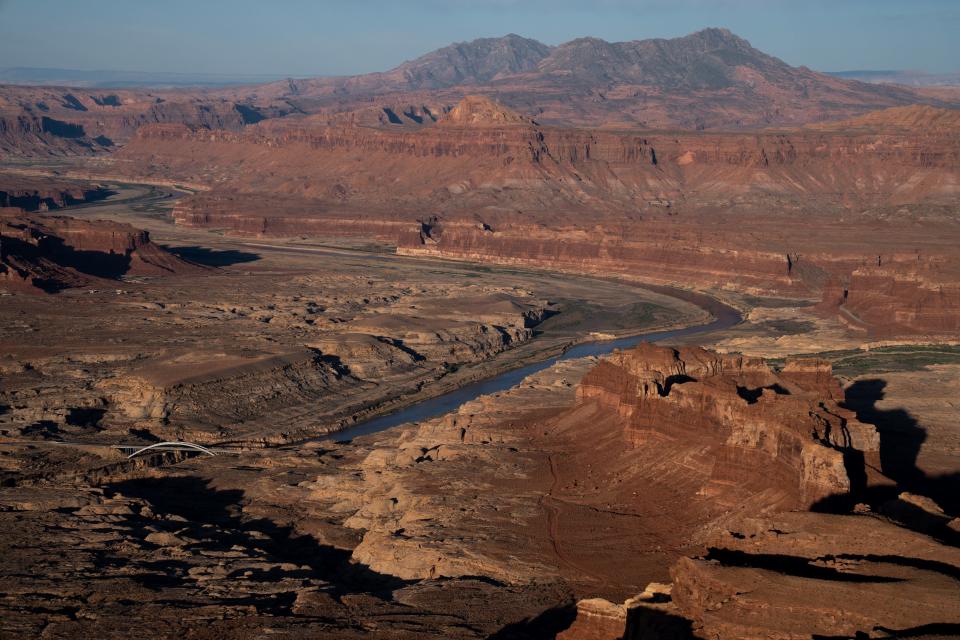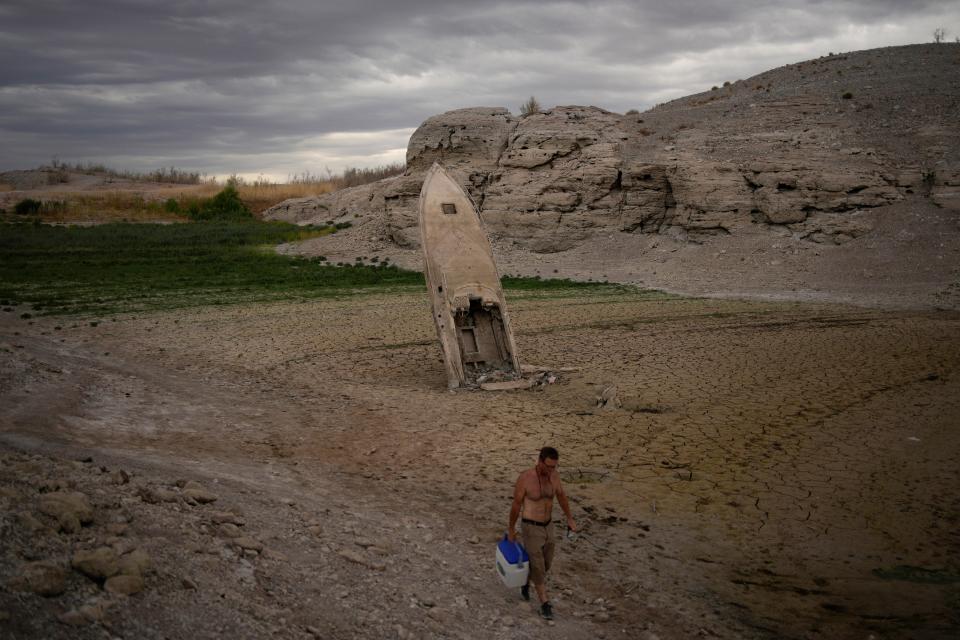Finally, the feds may force action to save the Colorado River. What if it comes too late?
Finally, the ball is rolling to force action on a plan to save the Colorado River.
But will it come in time to make a difference?
The seven states that rely on the river have been unable to voluntarily stop using enough water to keep a rapidly tanking Lake Mead and Lake Powell on life support.
The feds stepped back from a threat this summer to force action if states couldn’t agree, preferring to rely on voluntary actions instead.
Now, at least, it looks like they are putting a contingency plan in their back pocket, should those efforts fail to produce enough water in 2023 and 2024 (which is likely).
It could be fall before we see any results
But don’t get too excited. This is a formal review process, which means it will take months to actually do anything.
The goal is to have a draft of what’s called a supplemental environmental impact statement in spring and a final decision by late summer – meaning it could be next fall before we see any results on the lakes.
Yet federal modeling suggests that states may need to use at least 2 million acre-feet less water – over and above all the other cuts to which we’ve already agreed – in 2023. That’s enough to cover the city of Phoenix in 6 feet of water.
If we fail to save enough this year, the amount needed simply to keep the nation’s two largest reservoirs from going any lower would ratchet up markedly in 2024.
If late summer/early fall isn’t too late to put even a minimal buffer in place, it certainly is cutting it close.
Idea 1: Leave more water in Lake Powell

According to a notice of intent, which lays out the scope of the review in broad terms, the feds could decide to send more water into Lake Powell and less out to Lake Mead.
The Bureau of Reclamation exercised this power earlier this spring when it moved 500,000 acre-feet from upstream reservoirs to Lake Powell and declined to release 480,000 acre-feet from Powell to the downstream Lake Mead.
Both were done to stave off “minimum power pool” at Powell – the point at which water can no longer flow through hydropower turbines and instead must be forced through much smaller pipes that weren’t designed to handle this much water, especially over time.
It’s critical to avoid this point, especially in the short term while Reclamation studies modifications to the dam. Because if any of those pipes were to fail, only a fraction of water would be able to flow to Mead.
And that would be the end of the lake.
Idea 2: Cut those who rely on Lake Mead

But experts say there is only enough water upstream to do maybe two more such releases into Powell. And given the runoff forecast, Reclamation might have to withhold a lot more water from Mead than it did this spring just to get the same effect.
The bureau is reportedly studying the impact of releasing 5.5 million acre-feet from Powell to Mead – a full 1.5 million acre-feet less than flowed downstream from Glen Canyon Dam this year.
That much less water would tank Lake Mead in a heartbeat.
Money on the table: Feds set initial prices to not use Colorado River water
Which is why Reclamation also anticipates cutting the amount of water available for use in Arizona, California and Nevada, which get their water from the lake.
But how much are we talking? And how would those mandatory cuts fall?
The notice of intent doesn’t offer any details – though it does note, after laying out the prospects for a dry winter, that “the Department currently lacks analyzed alternatives and measures that may be necessary to address such projected conditions.”
It's risky to put progress on hold until spring
If the feds never really had a Plan B to mandate action, a formal process certainly buys them time to formulate one. It requires gathering public comment and fleshing out alternatives, including what happens if states agree to save insufficient amounts of water and what happens if we do nothing, other than maintain the status quo.
This process should cement the argument (as if most of us don’t already know) that the feds have no choice but to mandate tough actions.
But it also basically guarantees inaction until spring. No major user is going to volunteer a ton of water now, not knowing what sort of cuts could be thrown at them in a few months.
If the point of this exercise is to avoid legal action, or to shore up arguments should parties contest its actions, Reclamation should have initiated it months ago.
Because at some point, we’re going to run out of time and Band-Aids to keep a critical water supply on life support.
Fingers crossed that it’s not in the next few months.
Reach Allhands at joanna.allhands@arizonarepublic.com. On Twitter: @joannaallhands.
If you love this content (or love to hate it – hey, I won't judge), why not subscribe to get more?
This article originally appeared on Arizona Republic: Is federal action to save the Colorado River too late?

